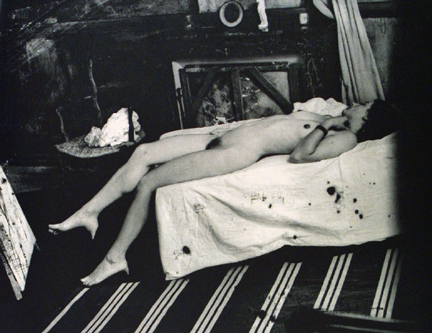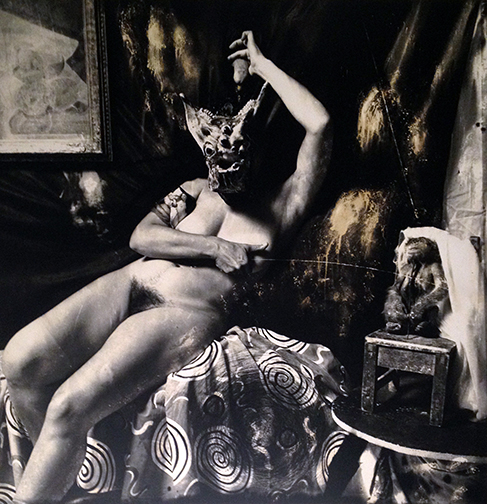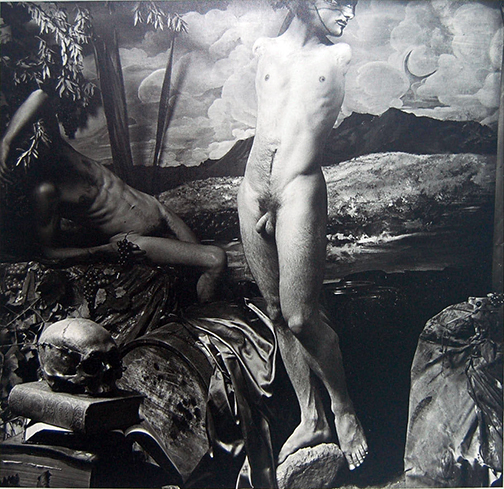About the Photographer
Witkin, Joel-Peter
American, b.1939 Brooklyn, NY
Joel-Peter Witkin's dark imagination is fueled by art history—including Courbet, Seurat, Caravaggio, and Dali—which he quotes in his photographic tableaux. Witkin also makes pointed references to the history of photography by including fragments of familiar images like Etienne Jules Marey's nineteenth century motion studies. "Waiting for de Chirico in the Artist's Section of Purgatory, New Mexico," (1994) for example, includes an image of a horse outfitted with the familiar white splints used to photographically chart human locomotion. Another of Witkin's photographic compositions, "Nègre's Fetishist," (1990) is a reenactment of a nude study by French photographer Charles Nègre. In Witkin's variation, the model wears a pair of latex heels, which give the illusion that she has sprouted "sensual stilts," to use Witkin's phrase. The inspiration for this fetishistic detail was taken from a book titled, "The Sex Life of the Foot and Shoe," a volume sent to Witkin by one of his numerous contributor-enthusiasts. This image appears in the limited-edition handmade book "Twelve Photographs" (1993), a publication that pairs Witkin's photogravures with a lengthy poem by Galway Kinnell. In "The Fool, Budapest," (1993) Witkin composes his own mythological spectacle using elements from two paintings: Titian's "Rape of Europa" (1559-62) and Velazquez's "Phillip IV on Horseback" (1635). In his construction, however, Witkin reveals the boundaries of a painted backdrop, alluding to the illusion of representational painting as well as the early tableaux vivant genre in the history of photography. His darkly fantastic vision is shaped by deliberate manipulation of the photographic surface to make it appear aged, an act that further comments on the nature of the photographic image by calling into question its permanency.
Above all else, Witkin considers issues of morality as central to his work. Drawing from a rich body of sources—literature, myth, Renaissance and Baroque painting, and his own personal background—he creates elaborate images that address the morbid, the perverse, the erotic, and the religious. In nearly all his works, these moral issues are acted out by social outcasts, pariahs, human oddities, and even cadavers.
Born in 1939 in Brooklyn, as a child Witkin claims to have made elaborate rooftop stages and collected newspaper articles detailing a variety of mental illnesses, dysfunctional characters, and societal outcasts. In his teens he befriended and photographed side show performers at Coney Island and won the respect of Eduard Steichen, who chose one of his early pictures for inclusion in the permanent collection of the Museum of Modern Art. Witkin studied at the Cooper Union School of Art and Architecture, New York (BFA, 1974) and the University of New Mexico, Albuquerque (MFA, 1986). His work has been featured in numerous international exhibitions, including solo shows at The Brooklyn Museum, New York; Interkamera, Prague; Picture Photo Space, Osaka, Japan; Museum of Modern Art, Haifa, Israel; San Francisco Museum of Modern Art; and in a major retrospective at The Solomon R. Guggenheim Museum, New York. Represented in significant museum collections nationwide, Witkins's photographs are also the subject of several monographs, including Joel-Peter Witkin, A Retrospective (1995); Harms Way (1994); Joel-Peter Witkin, Twelve Photographs in Gravure (1994) and Gods of Heaven and Earth (1989).


